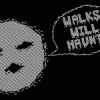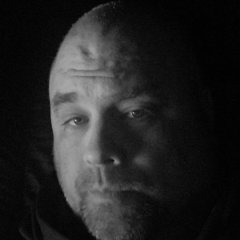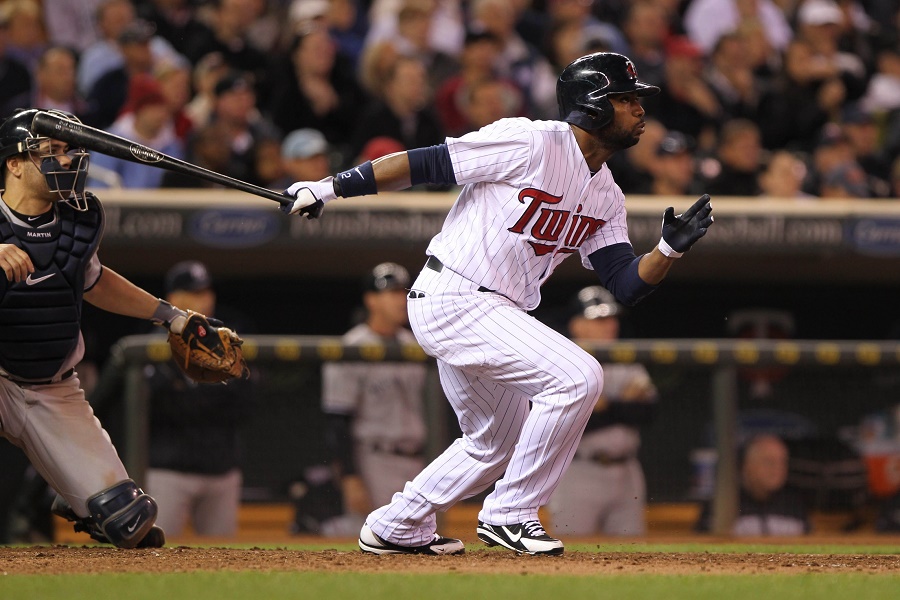Search the Community
Showing results for tags 'dan gladden'.
-
MINNEAPOLIS – The Twins have their annual team Hall of Fame inductions this weekend at Target Field. To kick things off Friday, Ron Gardenhire and fellow inductee Dan Gladden met with the media prior to the Twins vs. Rangers. Then "Gardy" went and did a little bartending. Ron Gardenhire is fir...
- 8 replies
-
- ron gardenhire
- tom kelly
-
(and 2 more)
Tagged with:
-
We may be deprived of current player baseball news due to the lockout, but the Minnesota Twins provided an update on their team Hall of Fame Thursday when it was announced Ron Gardenhire, Dan Gladden, and Cesar Tovar would join the ranks. The trio will become the 35th, 36th, and 37th members o...
- 30 replies
-
- ron gardenhire
- dan gladden
-
(and 2 more)
Tagged with:
-
The trio will become the 35th, 36th, and 37th members of the Minnesota Twins Hall of Fame. The organization began the Hall of Fame with its inaugural class back in 2000. In the 22 years since, we’ve seen names like Bert Blyleven, Torii Hunter, Zoilo Versailles, and Justin Morneau added to the ranks....
- 30 comments
-
- ron gardenhire
- dan gladden
-
(and 2 more)
Tagged with:
-
- 2 comments
-
- 1987revisited
- kent hrbek
-
(and 2 more)
Tagged with:
-

Talking Yourself Into Homer Bailey and Rich Hill: A Primer
RandBalls Stu posted an article in Just For Fun
Still, it’s a good month and a half until pitchers and catchers report, and absent a Josh Donaldson signing or a franchise-altering trade, you have a grim winter stretch ahead of you. You’ll need to start talking yourself into Bailey and Hill being the saviors this rotation so desperately needs. Her...- 16 comments
-
- homer bailey
- rich hill
-
(and 3 more)
Tagged with:
-
This is an excerpt from a story originating at Zone Coverage. Please click here to read the full story. One thing I really like about baseball is that there’s always just so much going on. If you don’t pay attention 100 percent, you can easily miss something. One thing I hone in on is weird pers...
- 3 comments
-
- bobby wilson
- minnesota twins
-
(and 1 more)
Tagged with:
-
This week's Almanac features former Twins Sal Butera, Keith Atherton, Michael Cuddyer, Jim Perry, Bob Casey, Kirby Puckett, Ken Landreaux, Mickey Hatcher, Luis Tiant, and Dan Gladden, and Minnesotan major leaguers Mike Kingery, Tom Quinlan, Jake Esch, and Bill Carney. March 25, 1874 Birthdate of Bil...
- 14 replies
-
- kirby puckett
- michael cuddyer
-
(and 3 more)
Tagged with:
-
March 25, 1874 Birthdate of Bill Carney It’s the birthdate of Bill Carney, born 144 years ago in St. Paul. He played outfield in his only two major league games with the Chicago Cubs on August 22, 1904 at age 30, going 0-for-7 in a doubleheader. He played 16 professional seasons altogether, as bot...
- 14 comments
-
- kirby puckett
- michael cuddyer
-
(and 3 more)
Tagged with:
-
The nickname “Wrench” -- short for “Mr Goodwrench” -- came from Kent Hrbek. Hrbek said that Dan Gladden looked like he finished performing an oil change on a car. “He reminds you of a guy who took four auto-shop classes in high school,” Hrbek explained to Sports Illustrated’s Austin Murphy. ''Dan...
- 6 replies
-
- 1987revisited
- dan gladden
-
(and 2 more)
Tagged with:
-
Gladden had a dour demeanor that rubbed some people the wrong way. While with the Giants, he had exchanged blows with teammate Jeffrey Leonard during an on-field batting practice. The scuffle stemmed from Gladden’s tendency to take long batting practice sessions, fouling off balls and taking extra c...
- 6 comments
-
- 1987revisited
- dan gladden
-
(and 2 more)
Tagged with:
-
Game 7 of the 1987 World Series was Sunday, Oct. 25, and the special section was published that following Thursday. The cover was a giant picture from the parade with this box of text with the headline “Minnesota Magic.” That may be a little difficult to read, so I typed it up below. I get goosebum...
- 2 comments
-
- world series
- kirby puckett
-
(and 3 more)
Tagged with:
-
A new NFL champion will be crowned in at US Bank Stadium later this evening, which will set off a massive celebration in the new champ’s home city. Parties, parades, more merchandise than you can imagine and, of course, commemorative souvenir special sections in their newspapers. Let’s take a quick...
- 2 replies
-
- kent hrbek
- world series
-
(and 3 more)
Tagged with:
-

Video: Slowing Things Down To See Jason Castro’s Silent Skill
Tom Froemming posted an article in Twins
As I noted in an article earlier this week, Twins rookie reliever Trevor Hildenberger had high praise for the help Castro provided him behind the plate. Dan Gladden, who was one of the interviewers, admitted that he initially questioned the value of framing, but that quickly changed after Castro’s a...- 30 comments
-
- jason castro
- trevor hildenberger
-
(and 2 more)
Tagged with:
-
Jason Castro being the Twins’ biggest offseason addition last year sparked a lot of great discussion locally about catcher framing. But watching him in games, it was difficult to identify how he was working his magic behind the plate. And that’s exactly the point.As I noted in an article earlier thi...
- 30 replies
-
- jason castro
- trevor hildenberger
-
(and 2 more)
Tagged with:
-
April 2, 1962 Twins Trade Ramos For Stigman It what is commonly considered the first major trade in Twins history, Minnesota trades Pedro Ramos for Nimrod native, 1954 Sebeka High School graduate, and 1960 All-Star Dick Stigman. Pedro Ramos started the first regular season game in Twins histor...
- 2 comments
-
- kent hrbek
- dan gladden
-
(and 3 more)
Tagged with:
-
March 26, 1989 Twins Trade Atherton for Castillo The Twins trade pitcher Keith Atherton to the Cleveland ballclub for outfielder Carmelo Castillo. Atherton’s name is attached to one of the more dubious records in team history as one of the record five Twins pitchers to work the eighth inning i...
- 2 comments
-
- bob casey
- herb carneal
-
(and 3 more)
Tagged with:
-
Kelly told reporters following the announcement that he has known for a couple of weeks. They are currently working on the pose, spending a lot of time on which uniform he'll be in. There was no timeline given for completion. Kelly joins several legendary Twins figures to be honored with a bronze st...
- 16 comments
-
- tom kelly
- dan gladden
-
(and 3 more)
Tagged with:
-
Several members of the 1987 Minnesota Twins World Series championship team were on the 1500ESPN stage for a half-hour with Patrick Reusse on Friday night. Following the on-air portion, the players stayed on the stage along with their manager, Tom Kelly. Twins President Dave St. Peter came to the s...
- 16 replies
-
- tom kelly
- dan gladden
-
(and 3 more)
Tagged with:
-
May 7, 1965 Twins Commit Seven Errors The Twins committed 7 errors in a 13-5 loss to the White Sox at home. Shortstop Zoilo Versalles and third baseman Rich Rollins each committed two errors, while Harmon Killebrew, Earl Battey and St. Paul-native, Jerry Kindall, added one each. Every infielder...
- 2 comments
-
- twins almanac
- tom kelly
-
(and 3 more)
Tagged with:
-
One of the appeals of Gladden was his game-changing speed. One newspaper headline the morning after the deal read “Popularity Sacrificed for Steals,” a motivation confirmed by Twins executive vice president, Andy MacPhail, who said that “the reason we got him is he gives us speed. He can steal bases...
- 29 comments
-
- dan gladden
- mickey hatcher
-
(and 1 more)
Tagged with:
-
Article below is by Matt Johnson A week before the start of their 1987 championship season, the Twins released fan-favorite, Mickey Hatcher, and traded for the much more dynamic, Dan Gladden. In exchange for the Dazzle Man and a player to be named later, the Twins sent two minor league relievers...
- 29 replies
-
- dan gladden
- mickey hatcher
-
(and 1 more)
Tagged with:
-
http://i1074.photobucket.com/albums/w413/mjohnso9/20160131_102737_zps4yadfqeb.jpg A week before the start of their 1987 championship season, the Twins released fan-favorite, Mickey Hatcher, and traded for the much more dynamic, Dan Gladden. In exchange for the Dazzle Man and a player to be named...
- 3 comments
-
- major minnesotans
- dan gladden
-
(and 2 more)
Tagged with:
-
3/27/73: 37 year old future Twins HOFer, Jim Perry, okays trade to Detroit. 3/27/05: Iconic Twins public address announcer of 44 years, Bob Casey, passes away at age 79. Tony Oliva, Kent Hrbek, Dan Gladden and Jack Morris would serve as pallbearers at his funeral. 3/28/96: On the final day of spring...
- 11 comments
-
- denard span
- michael cuddyer
-
(and 3 more)
Tagged with:
-
And here is The Twins Almanac for the week of March 27th to April 2nd, 2016. 3/27 is the birthday of Michael Cuddyer, born in 1979 in Norfolk, VA. He was the Twins’ 1st round draft pick out of high school in 1997. In 2009 he hit for the cycle (5/22), and homered twice in the same inning (8/23). He...
- 11 replies
-
- denard span
- michael cuddyer
-
(and 3 more)
Tagged with:
-
Recent Articles
-
Recent Posts
-
3
Hey, look here
Whoooooooo Ranked ProspectsTurangChourioQueroFrelickBillWilburSpankyEdgarJohn NOOOOOOOOOO...
By Brock Beauchamp
Last post date -
0
Can Jorge López Rediscover His First-Half Success?
The Twins made a much-needed trade for an all-star reliever at last year’s deadline, but what they got fell short of e...
By Lou Hennessy
Last post date
-
Blog Entries
-
Who's Online (See full list)
- There are no registered users currently online


























